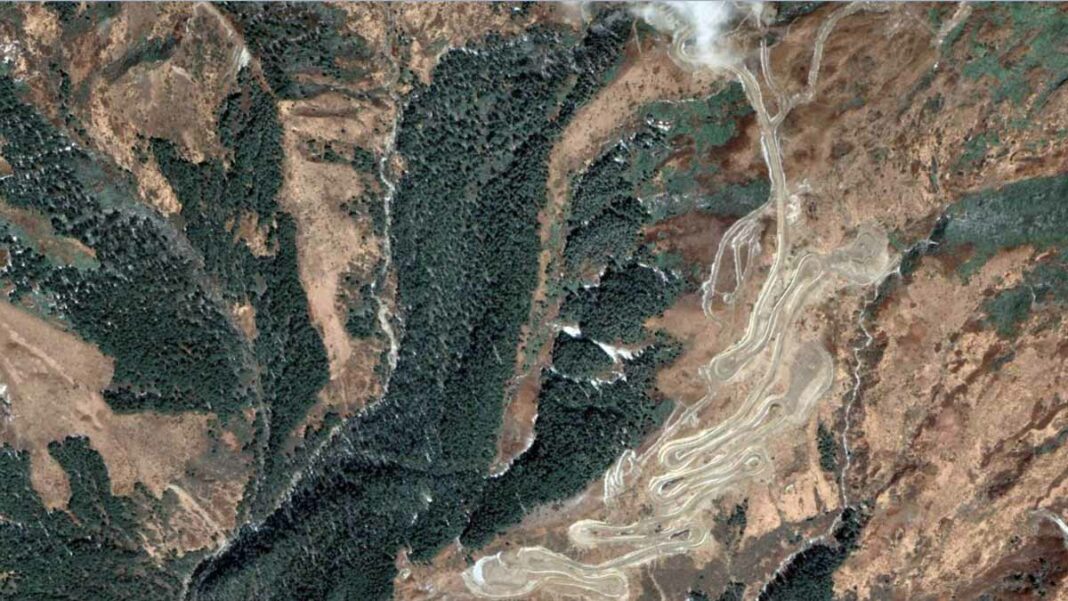Cabinet approval of the National Geospatial Policy (GSP) 2022 is headline news. Coming more than 75 years after Independence it has drawn huge applause. Goals of the GSP include: making India a world leader in this sphere; develop national framework to leverage digital economy; enable easy availability to businesses and public, and; thriving geospatial industry involving private enterprise.
Highlights of the milestones planed by 2025, 2030 and 2035 include: democratization of data for enhanced commercializaton with value added services; redefining the National Geodotic Framework with online access; national and sub-national geospatial management with government, industry, academia and public participation; high resolution survey, mapping and Digital Elevation Model (DEM); develop Geospatial Knowledge Infrastructure (GKI), and; high resolution Bathymetris Data of inland waters, sea-surface, deep sea to support Blue Economy.
The stated focus of the GSP is to use geospatial technology to attain Sustainable Development Goals (SDGs) and instill accountability and efficiency at all levels. Besides, the GSP is promoting Atmanirbhar Bharat, Integrated Geospatial Information Framework (IGIF). Data and ICT, innovation, open standards, capacity development, ease of doing business and democratization of data is mentioned.
A national-level Geospatial Data Promotion and Development Committee (GDPC) would replace the National Spatial Data Committee (NSDC). Survey of India (Soi) is to be responsible for developing and operating the National Geospatial Data Registry (NGDR) and the Unique Geospatial Interface (UGI) in collaboration with others. With mapping already deregulated, GSPC will replace the National Map Policy 2005 and further simplify survey by aircraft and drones.
Only generation/maintenance of minimal foundational data/core would be performed by the SoI while continuing to be the overarching nodal agency for geospatial data. The organization and structure of SoI will be aligned with the changed geospatial regime to facilitate a vibrant domestic geospatial services industry; SoI will become a civilian entity. Defence stream of recruitment in SoI would be discontinued and defence stream officers seconded to SoI would be permanently reverted to the Military. The 17-strong Geospatial Data Promotion Development Committee (GDPFC) is to have one member from Ministry of Defence (MoD) not below the rank of joint secretary.
Close scrutiny of the GSP reveals that it is good for promoting digital economy, private industry, innovations, blue economy, integrating multiple agencies dealing with geospatial data and taking India forward to become a world leader in global geospatial space with the best ecosystem for innovation. However, the requirements of national security and of the Armed Forces have been grossly ignored, which is a very serious flaw.
Intricacies of military security are often given short shrift for lack of understanding, fiscal or other considerations. One example is ignoring security hazards of the ISRO-OPPO deal signed in December 2020 despite the Chinese aggression in Eastern Ladakh; ignoring the fact that the defence forces are an important client for such applications. Even the fact that under China’s National Intelligence Law and Data Security Law, OPPO is bound to assist the Chinese Communist Party (CCP) in furthering Beijing’s national security interests; be it OPPO India or OPPO of another country.
One cannot help wondering if the GSP has deliberately ignored the fact that the Armed Forces are a major user of geospatial data. Hopefully this is not the case but then Rajya Sabha MP Subramanian Swamy tweeted sometime back that some bureaucrats of the MoD are honey-trapped by Pakistan’s ISI.
The relevance of geospatial data will keep growing in modern wars with rapid advances in technology and advanced weapons and weapon systems including unmanned and hypersonic platforms. All information systems use geospatial data. No weapon system can be optimized without an appropriate Geographic Information System (GIS). The confluence of GIS with OIS and management information system (MIS) is essential for capacity building for acquiring network centric warfare (NCW) capabilities.
GEOINT comprises imagery, imagery intelligence (IMINT) and geospatial information. The full utility of GEOINT comes from the integration of all three, which results in more comprehensive, tailored geospatial intelligence products for meeting the wider requirements of the Military, giving them the ability to rapidly respond to threats providing geo-referenced visual and data products that serve as foundation and common frame of reference. These products include interactive maps, virtual flythrough and walk-through mission scenarios.
There is no doubt that better geospatial data has been available through open source since long, one example being ‘Mapping Doklam“. At the same time, for US forces deployed abroad, the National Geospatial-Intelligence Agency (NGA) within the Department of Defence (DoD) supplies the base geospatial data which is supplemented by the Army Geospatial Centre (AGC)/National Air and Space Intelligence Centre (NASIC)/National Ground Intelligence Centre (NGIC)/National Maritime Intelligence-Integration Office (NMIO) as required. In our case, the Defence Intelligence Agency (DIA) and the Military Survey have little assets worth the name and the GSP is cutting the only link Military Survey has with the SoI.
As a nation talking much about our national intelligence set up, we should be ashamed of the following:
- The PLA could build a road undetected five km short of Galwan to facilitate its aggression in Eastern Ladakh in 2020.
- Concurrent to the 2020 aggression, China built a new village at Longju in Arunachal Pradesh
- It is Australians who reported (supported with satellite imagery) that the PLA had been exercising on a land-sized model of Ladakh in interior Tibet since 2014.
- It is Australians again who (supported with satellite imagery) say that the our posts in Yangtse Plateau in Twang atra of Arunachal Pradesh are connected by dirt tracks already suffering from erosion and landslides due to steep gradient, environmental conditions and relatively poor conditions); because of which these frontline positions can be cut off from resupply in open conflict that can prove decisive.
With better resources and finances by virtue of being a government organization, technology adaptation in the SoI is far better than Military Survey. This demands that the SoI-Military Survey bond should be strengthened. But the government appears intent on washing its hands off national security with reference to geospatial data and Armed Forces requirements by making SoI a peripheral nodal agency, stopping recruitment from the forces and revert all military personnel. Reducing the role of SoI and making it a purely civilian entity appears an attempt to avoid responsibility and accountability – leaving the military high and dry to deal directly with the private sector. With mounting threats to India’s national security, Chinese intrusions in India and Bhutan, plus Pakistan, Nepal and Myanmar drawn into China’s strategic sphere, wouldn’t his be treason?
The general responsibilities of the SoI prior to issue of the GSP included: adviser to GoI on all cartographic related matters; geo names; scrutiny and certification of maps; surveys, demarcation of borders; oceanic tidal predictions; research and development, and; the important function of training central and state government departments as well as from foreign countries.
Looking at the GSP, where is the responsibility and role of the MoD in geospatial data acquisition? Is the government willfully ignoring geospatial requirements of the Armed Forces? Do those who crafted the GSP understand that security of geospatial data required by the military is more complex and different than relational geospatial data; requiring data organization and structures to deny data manipulation and theft that would seriously compromise national security? Do we expect the sole MoD member in the GDPDC to ensure and safeguard all this? Has this policy been vetted by the NSA and the NSCS; because if it has, then the implications for national security are even graver?
Prudence demands that the government immediately review the GSP to scrutinize and incorporate the national security aspects, meet the geospatial requirements of Armed Forces or rather the Security Sector per se and ensure foolproof security against geospatial data manipulation and theft. The delinking of SoI from Military Survey and stopping postings of military personnel in SoI is detrimental to operational requirements, which needs to be reversed.
The author is an Indian Army veteran. Views expressed are personal.




















Don’t understand what this government is up-to.. Weakening the Indian Army only to serve the interests of Babus & putting the National Security on edge. Very Shameful indeed.